Lane assist technology has become an increasingly vital component of modern vehicle safety systems, using cameras and sensors to help drivers maintain their position on the road.
This advanced driver assistance system (ADAS) detects lane markings and either warns drivers when they begin to drift or actively steers the vehicle back into the proper lane. As automotive technology progresses, the quality and reliability of these systems vary significantly between manufacturers and models.
Some vehicles offer refined lane-keeping assistance that works seamlessly across various road conditions, while others struggle with basic functionality, creating a frustrating and potentially unsafe driving experience.
This comprehensive analysis examines five vehicles that excel in lane assist technology and five that fall short of expectations. For each vehicle, we’ll explore the specific features, real-world performance, technological implementation, and user feedback to provide a clear picture of which systems truly deliver on their promises and which ones need significant improvement.
Understanding these differences is crucial for safety-conscious consumers navigating today’s increasingly tech-focused automotive marketplace.
5 Cars With Effective Lane Assist
These standout models feature precise lane-keeping systems that gently guide your vehicle with natural, confidence-inspiring corrections that never feel abrupt or intrusive.
Their advanced cameras and sophisticated software accurately detect even faded lane markings, maintaining rock-solid positioning without the ping-pong effect that plagues lesser systems.
From highway cruising to winding roads, these refined lane assist technologies reduce driver fatigue while enhancing safety through consistent, predictable performance in diverse conditions.
Tesla Model 3
The Tesla Model 3 continues to set the standard for lane-keeping technology with its Autopilot system, which represents one of the most sophisticated implementations available in the consumer market.
Unlike many competitors that simply nudge the vehicle when it drifts toward lane markings, Tesla’s system actively centers the car within the lane, creating a more natural driving experience that reduces driver fatigue during long journeys.
Tesla’s implementation relies on a comprehensive suite of eight external cameras, providing 360-degree visibility around the vehicle with a range of up to 250 meters.
This extensive visual data is processed through Tesla’s custom neural network computer that executes 144 trillion operations per second. The result is a system that can accurately detect lane markings even in challenging conditions where other vehicles struggle, such as faded lines, construction zones, or roads with inconsistent markings.
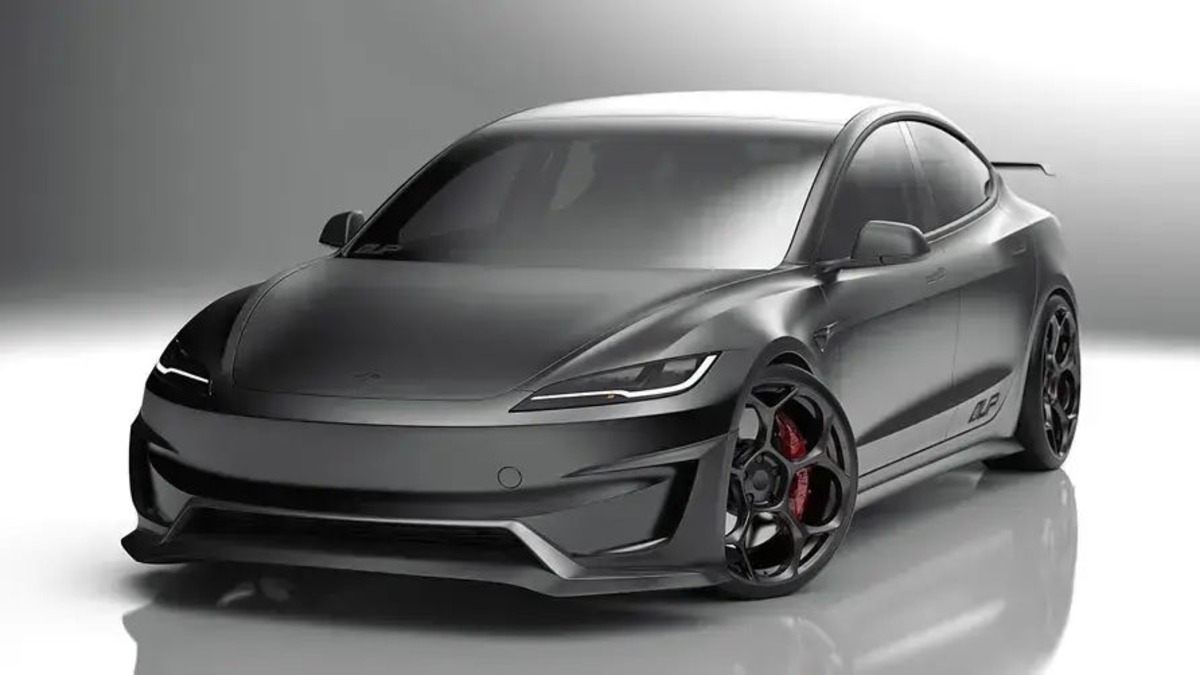
What truly distinguishes the Model 3’s lane assist is its adaptability and learning capabilities. Through Tesla’s regular over-the-air updates, the system continuously improves based on data collected from the entire Tesla fleet.
This crowdsourced approach allows the Model 3 to handle increasingly complex traffic scenarios and road conditions that would confuse less sophisticated systems.
In practical use, the Model 3’s lane assist demonstrates remarkable consistency across different environments. The system performs exceptionally well on highways, maintaining precise positioning even through gentle curves at higher speeds.
Unlike many competitors, it also functions reliably on city streets with clear lane markings. The smooth, predictable interventions avoid the jerky corrections common in less refined systems, instilling driver confidence without creating a disconcerting experience.
User feedback consistently praises the natural feel of the Model 3’s lane-keeping assistance, with many noting that the subtle steering inputs make it feel like a collaborative driving experience rather than a battle for control.
While no system is perfect, Tesla’s implementation represents the cutting edge of what’s currently possible in mainstream vehicles, making it the benchmark against which other lane assist systems are measured.
Mercedes-Benz S-Class
The Mercedes-Benz S-Class has long represented the pinnacle of automotive technology, and its Active Lane Keeping Assist system upholds this reputation with exceptional performance across diverse driving conditions.
As the flagship of the Mercedes lineup, the S-Class incorporates sophisticated engineering that makes its lane assist functionality feel both premium and unobtrusive.
The system utilizes a combination of stereo cameras and radar sensors to create a detailed digital map of the vehicle’s surroundings. This multi-sensor approach enables the S-Class to maintain accurate lane positioning even when visual cues are compromised by weather conditions or poor road maintenance.
The stereo camera setup, mounted behind the windshield, provides depth perception that allows for more nuanced decision-making than single-camera systems found in many competitors.
What sets the S-Class apart is its predictive capability, which anticipates upcoming road geometry rather than simply reacting to current conditions.
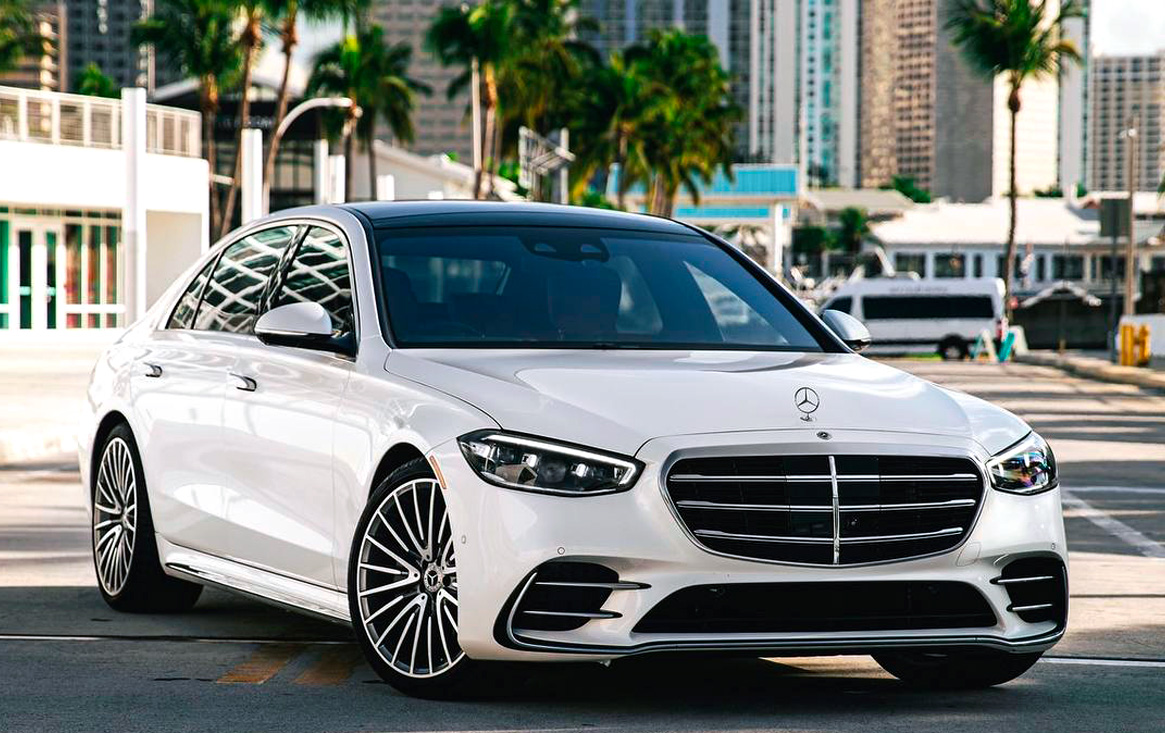
When approaching curves, the system smoothly adjusts steering input based on road trajectory, creating a natural driving line that mimics an experienced human driver.
This forward-thinking approach eliminates the abrupt corrections that plague less advanced systems when encountering sudden changes in road design.
Mercedes has also mastered the human-machine interface aspect of lane assist technology. The steering wheel features capacitive sensors that detect when the driver’s hands are on the wheel, allowing for a more natural interaction than the annoying torque-based systems used by many manufacturers that require drivers to constantly wiggle the steering wheel.
When intervention is necessary, the S-Class applies steering force gradually, beginning with gentle guidance that increases progressively only if needed.
The system’s effectiveness doesn’t diminish on poorly marked roads, thanks to its ability to use additional environmental cues like road edges and guardrails when traditional lane markings are insufficient.
This adaptability means S-Class drivers can rely on the lane assist functionality across a wider range of driving scenarios than most competing systems allow, creating a consistently premium experience that aligns with the vehicle’s luxury positioning.
Toyota Camry
The Toyota Camry’s Lane Tracing Assist system represents an impressive achievement in democratizing advanced safety technology, delivering premium-level lane-keeping performance in a mainstream, affordable sedan.
As part of Toyota Safety Sense 2.5+, this system demonstrates that effective lane assist functionality doesn’t need to be reserved for luxury vehicles. Toyota has taken a comprehensive approach to lane keeping that combines multiple technologies working in harmony.
The system uses a forward-facing camera mounted at the top of the windshield along with millimeter-wave radar to detect lane boundaries and monitor road conditions.
What makes the Camry’s implementation particularly effective is its integration with the vehicle’s Dynamic Radar Cruise Control, creating a cohesive system that maintains both proper speed and lane position. The Lane Tracing Assist feature in the Camry goes beyond simple lane departure prevention found in basic systems.
Rather than waiting until the vehicle approaches the lane boundary before intervening, it actively works to center the Camry in the lane, providing continuous minor adjustments that create a smooth driving experience.
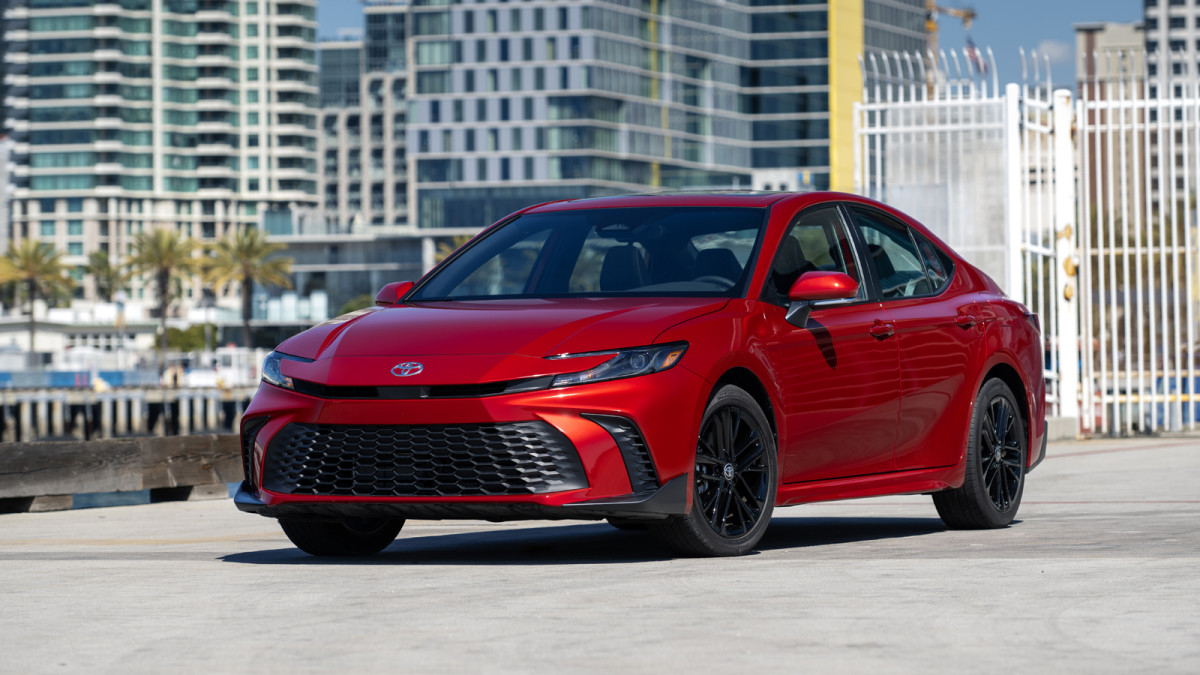
This proactive approach significantly reduces driver fatigue on long journeys while maintaining a natural feel that doesn’t fight against driver inputs.
Perhaps most impressive is the system’s performance across varying light conditions. While many lane assist technologies struggle during dawn, dusk, or in poor weather, the Camry’s system maintains reliable functionality across a broader range of environments.
The high-resolution camera can detect even faded lane markings, while sophisticated image processing algorithms filter out potential distractions and false readings.
Owner feedback consistently highlights the system’s intuitive nature and lack of false interventions, with many noting that it inspires confidence without being intrusive.
When the system does need to intervene, it does so with gradual steering inputs rather than sudden corrections, creating a collaborative feeling rather than wrestling control from the driver.
This balanced approach to automation demonstrates Toyota’s driver-centric philosophy, assisting without removing the human element from the driving experience.
For a mid-priced sedan, the Camry delivers lane assistance technology that outperforms many systems found in significantly more expensive vehicles.
Volvo XC60
The Volvo XC60’s Pilot Assist system exemplifies the Swedish manufacturer’s commitment to safety innovation, delivering one of the most refined and reliable lane-keeping experiences available in the luxury crossover segment.
True to Volvo’s safety-first philosophy, the system prioritizes consistent performance and driver comfort over flashy features, resulting in lane assist functionality that inspires genuine confidence in real-world conditions.
Volvo’s implementation relies on a sophisticated fusion of camera and radar technology, with a forward-facing camera detecting lane markings while radar sensors monitor surrounding traffic.
What distinguishes the XC60’s system is its exceptional calibration. The engineers have struck a perfect balance between intervention and autonomy. The system provides enough steering assistance to maintain lane position effectively without creating the artificial, “on-rails” feeling that makes some competing systems feel unnatural.
The XC60 particularly excels in challenging visibility conditions where other lane assist systems often fail. The system maintains functionality during light rain and can work with partially obscured lane markings, demonstrating advanced image processing capabilities that filter out potential confusion factors.
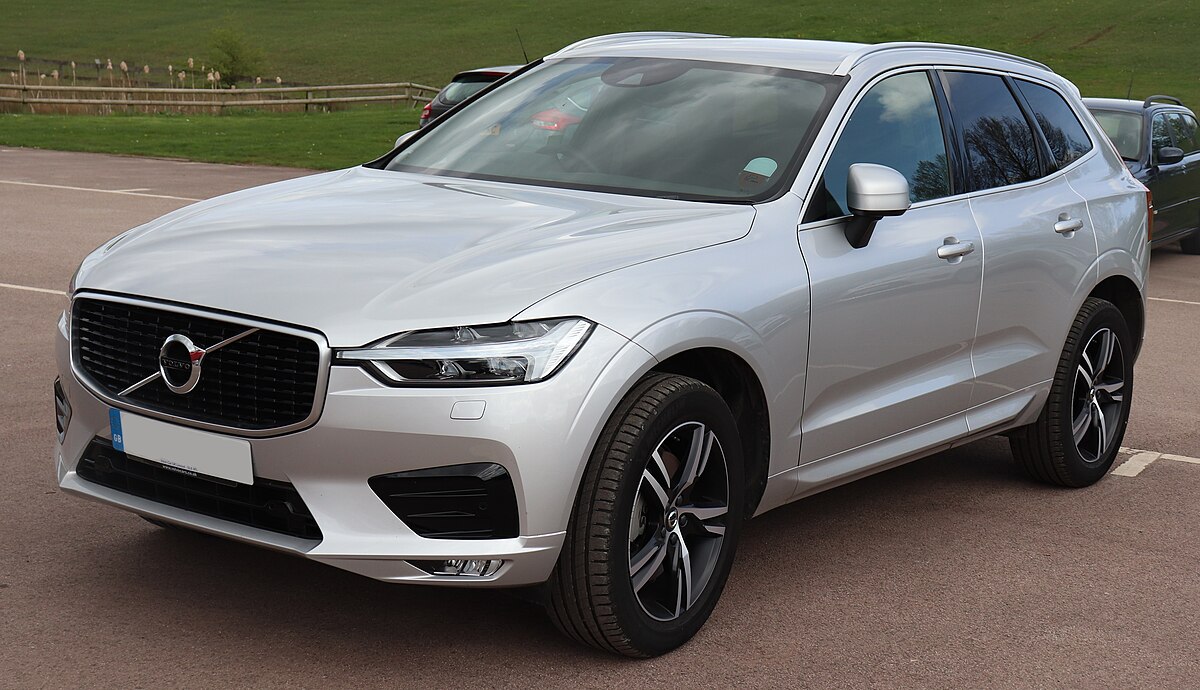
When lane markings temporarily disappear, the system intelligently uses the position of surrounding vehicles as reference points to maintain appropriate road position until formal lane markers reappear.
Volvo has also addressed one of the most common complaints about lane keeping technology, the interaction between the driver and the vehicle. The XC60’s system features adaptive sensitivity that learns from the driver’s style over time, adjusting its intervention threshold to complement individual preferences.
This means the system becomes less intrusive for confident drivers while providing more support for those who appreciate additional assistance. What truly sets the XC60 apart is its performance consistency across different road types.
While many lane assist systems function well only on perfectly marked highways, Volvo’s implementation maintains effectiveness on rural roads and through construction zones with temporary markings.
The system also handles curves with remarkable poise, maintaining a smooth trajectory without the ping-ponging between lane markers that affects less sophisticated systems. For drivers seeking effective lane assistance without sacrificing the joy of driving, the XC60 delivers an exceptional balance of safety enhancement and driving pleasure.
Also Read: 5 Vehicles With Smart Cruise Control and 5 That Lag Behind
Hyundai Sonata
The Hyundai Sonata has emerged as a surprising standout in lane-keeping technology, with its Highway Driving Assist system delivering performance that challenges luxury brands costing significantly more.
This mid-priced sedan demonstrates Hyundai’s commitment to democratizing advanced driver assistance features, providing mainstream consumers with lane assist functionality that was once exclusively available in premium vehicles.
The Sonata’s system utilizes a forward-facing camera mounted near the rearview mirror combined with radar sensors to create a comprehensive picture of the road environment.
What makes this implementation particularly effective is Hyundai’s sophisticated software tuning, which creates smooth, consistent lane centering rather than the reactive ping-ponging common in less refined systems.
The Sonata actively works to maintain its position in the middle of the lane, providing gentle, continuous steering inputs rather than waiting until the vehicle approaches lane boundaries.
Hyundai has addressed one of the most significant challenges in lane assist technology performance on curves. While many systems struggle with anything beyond gentle bends, the Sonata’s Highway Driving Assist maintains impressive accuracy through moderate curves, slowing appropriately when necessary and maintaining proper lane position throughout.
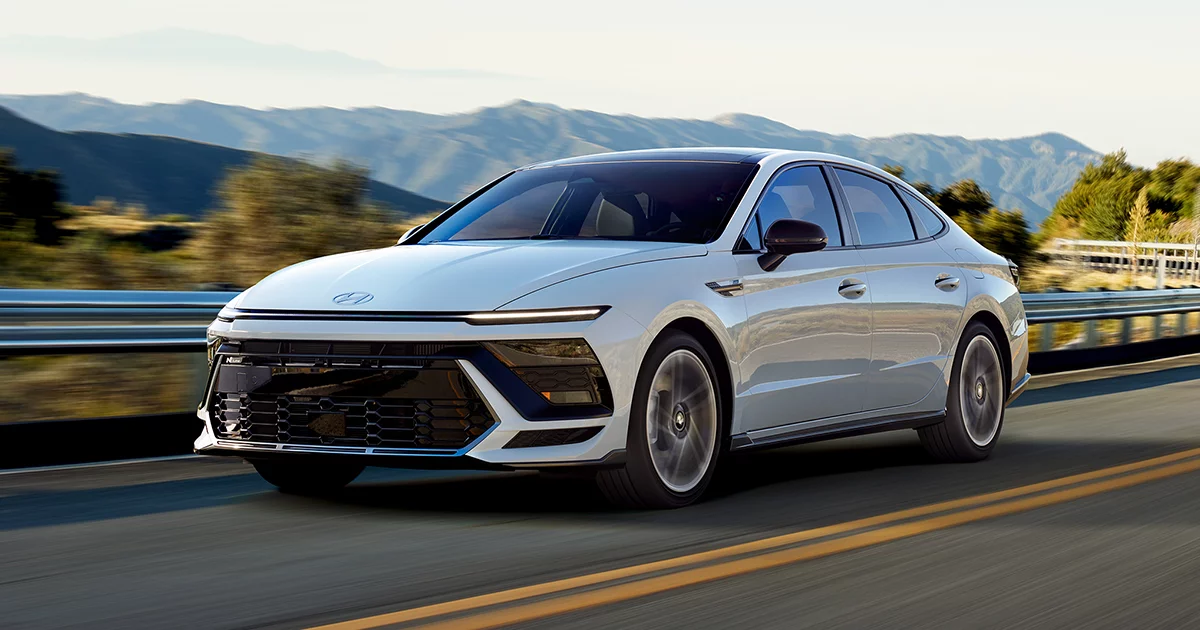
This capability significantly extends the useful range of the system beyond the perfectly straight highways where basic lane assist features tend to function best.
The interface between driver and technology also demonstrates thoughtful engineering. The Sonata uses a steering wheel torque sensor to detect hands-on status, but unlike many competitors, it’s calibrated to recognize a natural grip rather than requiring exaggerated steering inputs to acknowledge driver attention.
This creates a more relaxed driving experience without compromising safety monitoring. Particularly noteworthy is the system’s performance in less-than-ideal conditions. The Sonata maintains functionality with partially faded lane markings and in moderate rain, situations where many competing systems disengage entirely.
The lane centering also coordinates seamlessly with the adaptive cruise control, creating an integrated driving experience that reduces cognitive load during highway journeys. For consumers seeking effective lane assistance without premium pricing, the Sonata delivers exceptional value with technology that performs at a level previously reserved for luxury vehicles.
5 Cars That Can’t Stay Straight
Despite bold marketing claims, these vehicles feature frustratingly inconsistent lane assist systems that ping-pong between lane markings or suddenly disengage without warning.
Their confused cameras struggle with common road conditions like sun glare, construction zones, or faded lines, creating more stress than assistance during everyday driving
Many owners ultimately disable these unreliable systems entirely, finding the constant corrections and unpredictable behavior more distracting than helpful for maintaining proper lane position.
Jeep Wrangler
The Jeep Wrangler represents one of the most disappointing implementations of lane assist technology in the modern automotive world, with a system that fundamentally misunderstands the needs and expectations of its user base.
While Jeep’s iconic off-roader has made significant strides in incorporating advanced technology, its lane-keeping system demonstrates that adding features without proper execution can create more problems than solutions.
The Wrangler’s lane assist system relies on a single forward-facing camera mounted at the top of the windshield, lacking the multi-sensor approach found in more effective implementations.
This minimal hardware provides insufficient data for reliable lane detection, particularly in the varied conditions Wrangler owners frequently encounter.
The system struggles with basic challenges like roads with faded markings, wet surfaces, or changing light conditions precisely the versatility expected from a vehicle marketed for adventure.
The most significant drawback is the system’s binary intervention approach. Unlike sophisticated systems that provide gentle, continuous guidance, the Wrangler’s lane assist delivers abrupt corrections only after the vehicle has drifted significantly toward lane boundaries.

These sudden inputs create a jarring experience that feels like wrestling with the steering wheel rather than receiving assistance. Many owners report disabling the feature entirely after experiencing its unpredictable behavior.
The Wrangler’s unique driving dynamics further complicate effective lane assist implementation. Its solid axle suspension and high center of gravity create natural movement that the system misinterprets as unintentional drift, resulting in unnecessary interventions during normal driving.
This fundamental mismatch between vehicle characteristics and assistance technology demonstrates a lack of comprehensive engineering integration.
The system’s performance in off-road adjacent scenarios a core component of the Wrangler ownership experience, is particularly problematic. On rural roads with inconsistent shoulders or gravel transitions, the lane assist frequently misidentifies boundaries and attempts inappropriate corrections.
For a vehicle specifically designed to tackle challenging terrain, the inability to distinguish between intentional off-pavement driving and lane departure represents a significant oversight in system design.
While Jeep continues to excel in true off-road capability, its lane assist technology remains a weak point that undermines the otherwise technological progress seen in recent Wrangler models.
Mitsubishi Outlander
The Mitsubishi Outlander’s Lane Departure Warning system represents a textbook example of outdated technology being implemented without the refinement necessary for effective real-world performance.
Despite marketing materials suggesting modern lane assistance capabilities, the Outlander’s system falls dramatically short when compared to competitors in its price range, creating frustration for owners expecting contemporary safety features.
At its core, the Outlander suffers from hardware limitations that prevent effective lane keeping assistance. The system relies on a single low-resolution camera that struggles to consistently detect lane markings in anything less than perfect conditions.
This rudimentary approach might have been acceptable five years ago, but it falls dramatically short of current expectations, particularly when similarly priced vehicles from brands like Hyundai and Kia offer vastly superior technology.
The system’s fundamental design philosophy also creates usability issues. Rather than providing active lane centering, the Outlander offers only basic lane departure warning with limited steering intervention.

When the system does attempt to correct course, it delivers aggressive, jerky inputs that feel unnatural and potentially more distracting than helpful. This binary approach, either no assistance or sudden intervention, creates an unpredictable driving experience that undermines driver confidence.
Perhaps most problematic is the system’s tendency toward false positives and false negatives. Owners consistently report the Outlander’s lane assist activating unnecessarily on well-maintained roads while simultaneously failing to detect legitimate lane departures on roads with less visible markings.
This inconsistency means drivers can never fully trust the system to function as expected, negating the safety benefits lane assist technology should provide. The Outlander also demonstrates poor integration between its various driver assistance systems.
While more sophisticated vehicles coordinate adaptive cruise control with lane keeping to create a cohesive experience, Mitsubishi’s implementation treats each system as a separate feature operating independently.
This disjointed approach creates scenarios where one system contradicts another, further diminishing the user experience. For consumers seeking effective lane keeping assistance, the Outlander represents a disappointing implementation that feels like an afterthought rather than an integral safety system.
Dodge Challenger
The Dodge Challenger’s Lane Sense Lane Departure Warning system exemplifies the challenges of integrating modern driver assistance technology into a vehicle platform fundamentally designed for a different era of automotive engineering.
While the Challenger excels in delivering old-school muscle car performance, its lane assist implementation demonstrates that bolting advanced technology onto aging architecture creates significant compromises.
The Challenger’s system struggles with basic functionality due to fundamental calibration issues. Using a single forward-facing camera mounted near the rearview mirror, the system attempts to detect lane markings and provide steering input when drift is detected.
However, the steering calibration is poorly matched to the Challenger’s heavy, hydraulic steering system, creating a disjointed experience when intervention occurs.
Rather than smooth, progressive assistance, the system delivers sudden, artificial-feeling corrections that conflict with the organic steering feedback muscle car enthusiasts specifically appreciate.
Performance consistency presents another significant issue with the Challenger’s lane assist functionality. Owners consistently report that the system works intermittently, even in ideal conditions, sometimes failing to detect clear lane markings on perfectly maintained highways.
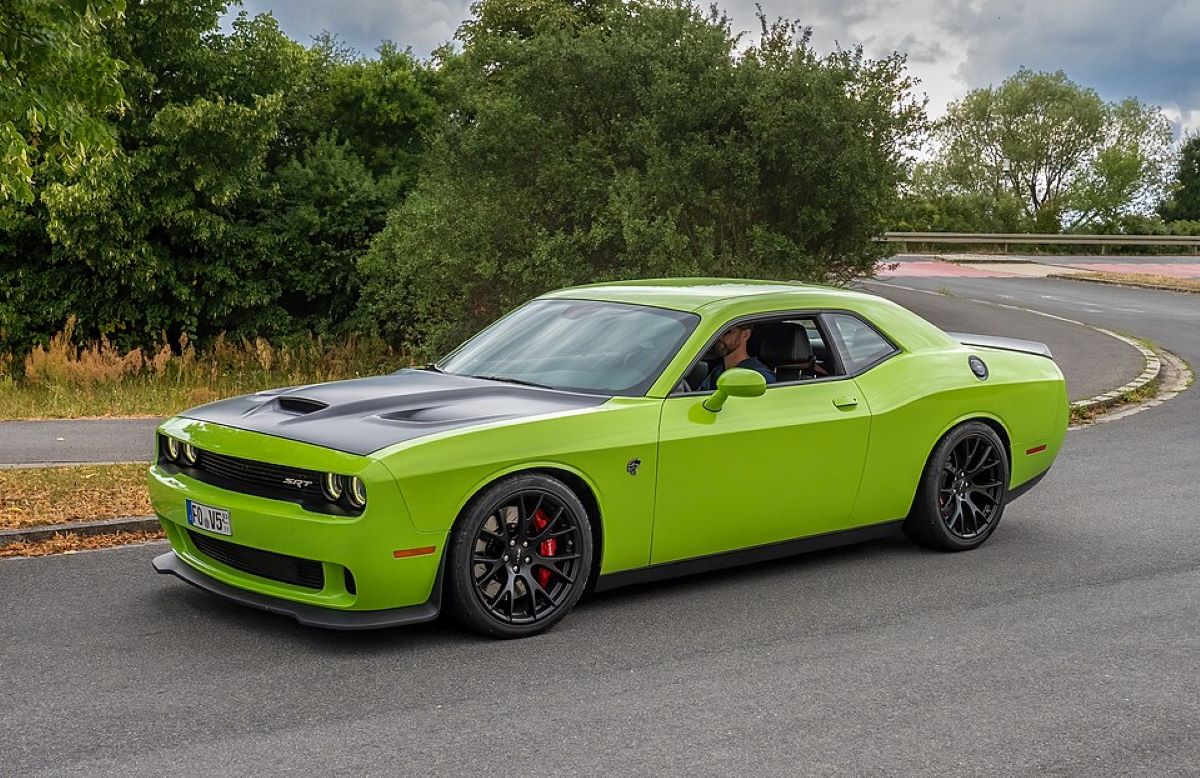
This unpredictability means drivers can never fully trust the system to function as expected, undermining the safety benefits lane assist should provide and potentially creating a false sense of security.
The Challenger’s performance-oriented suspension and steering geometry further complicate effective lane assist implementation. The vehicle’s tendency toward tramlining (following road imperfections and crowned surfaces) creates natural movement that the system misinterprets as unintentional drift, resulting in unnecessary interventions during normal driving.
These false corrections feel particularly intrusive in a vehicle category where driver engagement represents a primary selling point. Perhaps most telling is how quickly Challenger owners disable the lane assist feature entirely.
Owner forums and dealership reports indicate that a significant majority of Challenger drivers turn off the system after brief initial use, finding it more distracting than helpful.
This widespread rejection indicates a fundamental mismatch between technology implementation and user expectations. While Dodge continues to deliver on the Challenger’s core promise of exhilarating performance, its lane assist technology remains a weak point that highlights the challenges of integrating modern safety systems into platforms designed for a different automotive era.
Nissan Kicks
The Nissan Kicks represents a disappointing implementation of lane assist technology in the crowded subcompact crossover segment, with a system that falls short of both competitor offerings and consumer expectations.
Despite being positioned as a tech-forward urban vehicle aimed at younger buyers, the Kicks delivers lane keeping assistance that feels distinctly behind the curve in both capability and execution.
The foundation of the Kicks’ lane assist shortcomings lies in its outdated hardware. The system relies on a single camera with limited resolution, lacking the multi-sensor approach found in more effective implementations.
This minimal hardware provides insufficient data for reliable lane detection, particularly in urban environments where the Kicks is primarily marketed.
The system struggles with basic challenges like partially faded crosswalk lines, construction zones, or roads with multiple overlapping markings precisely the complex environments city drivers regularly encounter.
When the Kicks’ lane assist does intervene, it does so with inconsistent force and timing. Unlike systems that provide gentle, continuous centering, the Nissan delivers abrupt corrections only after significant drift, creating a jarring experience that feels reactive rather than assistive.
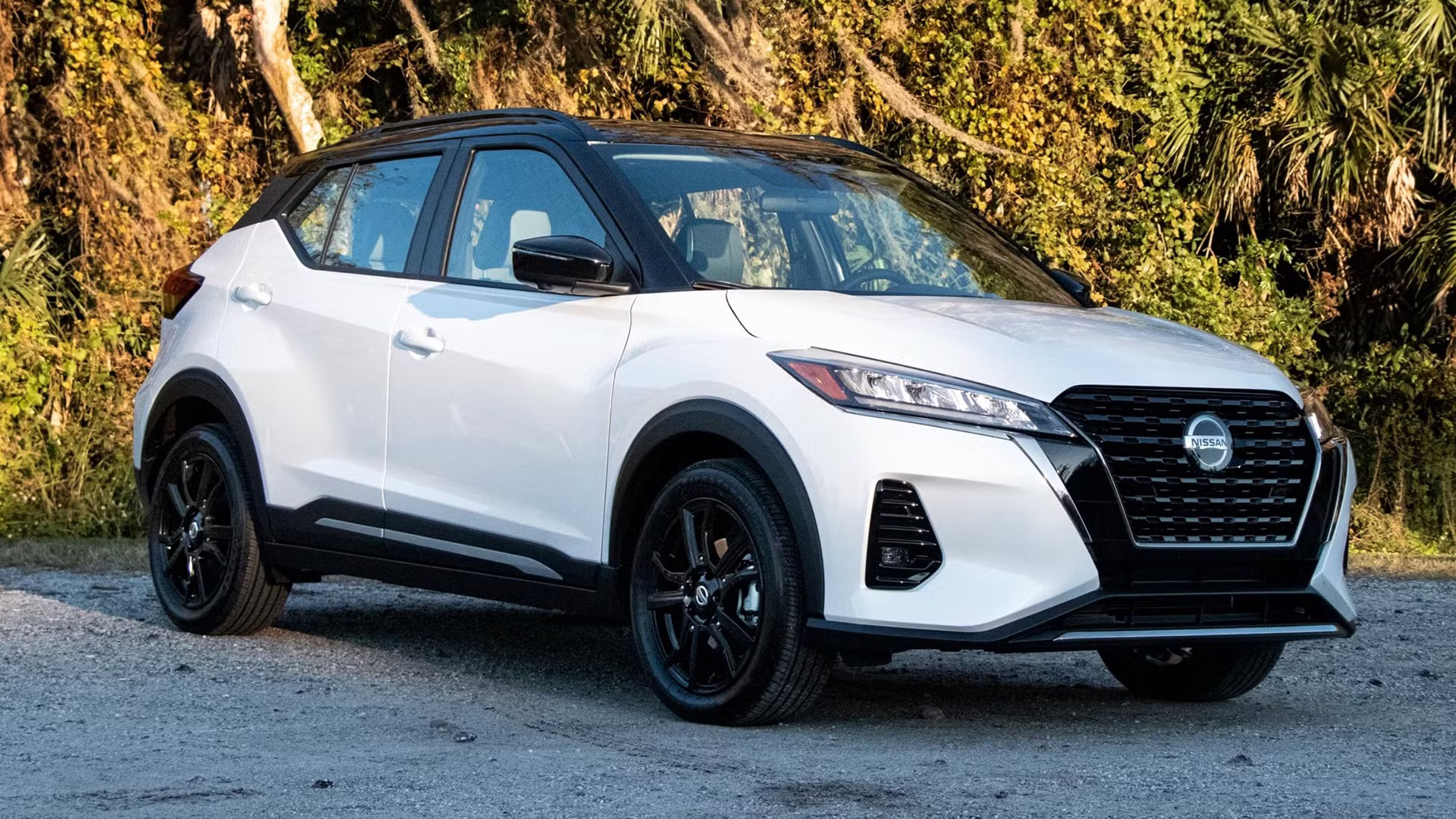
This binary approach, either no assistance or sudden intervention, undermines driver confidence and often feels more distracting than helpful, particularly in dense traffic situations where smooth operation is essential.
The system’s sensitivity settings further complicate effective usage. Even at its most sensitive configuration, the Kicks’ lane assist frequently fails to detect lane departures on clearly marked roads, while triggering false positives when passing exit ramps or road transitions.
This unpredictability means drivers must maintain the same vigilance without the system, negating the reduced cognitive load that effective lane assistance should provide.
Perhaps most disappointing is Nissan’s failure to improve the system despite multiple model year updates. While competitors continuously refine their driver assistance technologies through software improvements, the Kicks’ lane assist remains virtually unchanged since its introduction, suggesting limited commitment to evolving this safety feature.
For budget-conscious consumers seeking effective lane assistance in an affordable package, the Kicks represents a compromised implementation that prioritizes marketing checkboxes over functional performance.
Fiat 500X
The Fiat 500X’s Lane Sense Departure Warning system exemplifies the pitfalls of implementing advanced driver assistance features without sufficient development resources or engineering commitment.
Despite the vehicle’s stylish European aesthetic and premium positioning within its segment, the 500X delivers one of the least refined lane keeping experiences in the modern automotive world.
The foundation of the 500X’s lane assist shortcomings begins with hardware limitations. The system utilizes a single forward-facing camera mounted at the top of the windshield, lacking the multi-sensor approach found in more effective implementations.
This minimal setup provides insufficient environmental data, particularly in challenging conditions like dawn, dusk, or light rain situations where reliable lane assistance becomes most valuable for drivers.
When the system does attempt to assist, it does so with inconsistent force and timing that undermines driver confidence. Unlike sophisticated systems that provide gentle, continuous guidance, the 500X delivers unpredictable corrections that feel arbitrary rather than purposeful.
This creates a disjointed driving experience where the driver must constantly anticipate and compensate for the system’s interventions rather than working collaboratively with the technology.
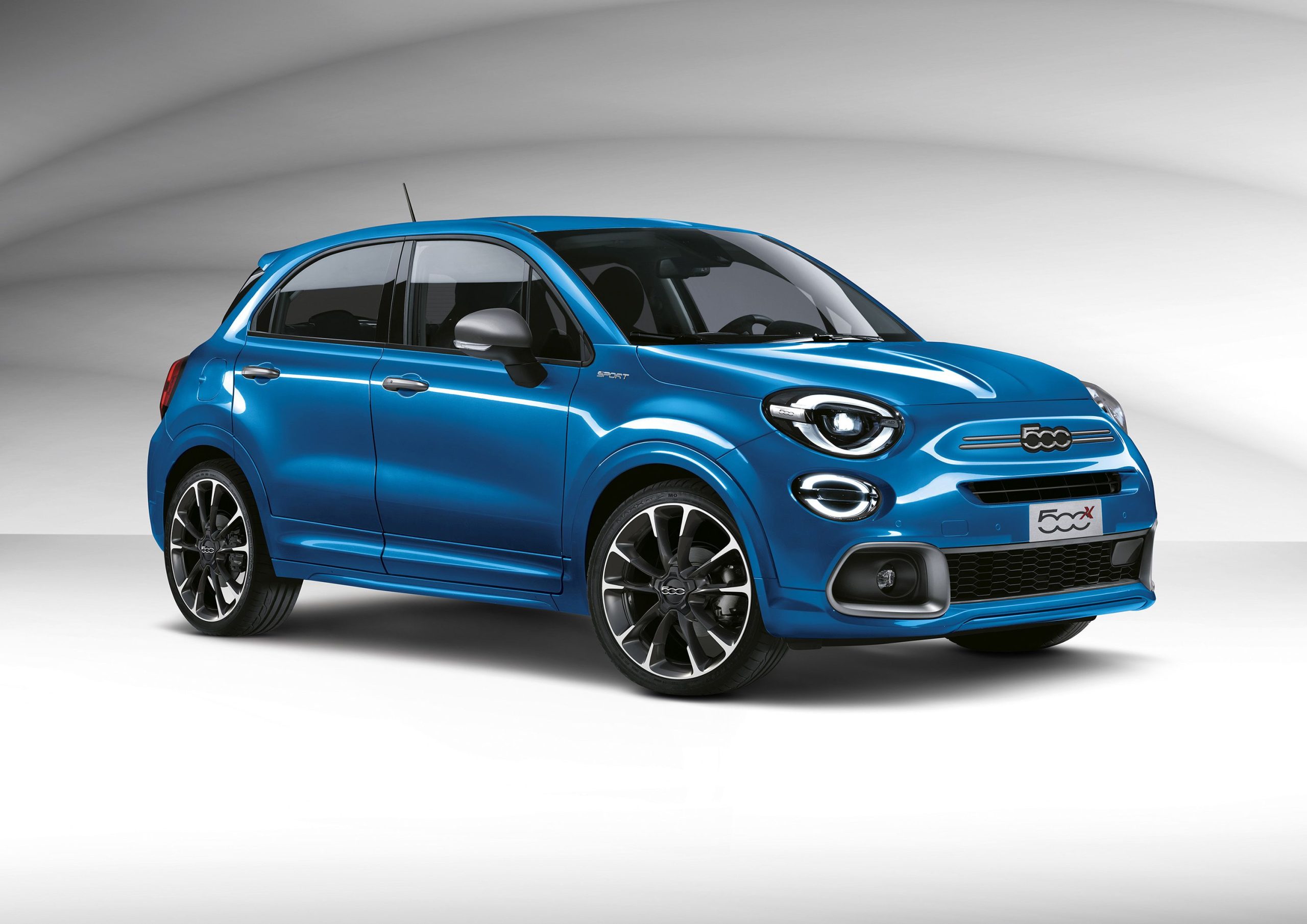
The 500X demonstrates particularly poor performance on anything beyond perfectly maintained highways with pristine markings. On rural roads or city streets with inconsistent lane indicators, the system frequently fails to detect legitimate lane boundaries while simultaneously triggering false interventions based on non-lane features like road repairs or shadow patterns.
This unreliability means drivers must maintain the same vigilance they would without the system, negating the safety benefits lane assist should provide. Owner feedback consistently highlights the system’s intrusive alerts as another significant drawback.
The 500X employs aggressive audible warnings when lane departure is detected, but these alerts often activate too late to provide a meaningful warning or trigger unnecessarily during normal driving.
Many owners report disabling the system entirely after experiencing its distracting behavior, defeating the purpose of having the safety feature installed.
For consumers seeking effective lane assistance in a stylish small crossover, the 500X represents a disappointing implementation that prioritizes marketing features over functional performance.
While Fiat succeeds in delivering distinctive Italian design, its lane assist technology remains a significant weak point that highlights the challenges facing smaller manufacturers attempting to implement advanced driver assistance systems without the development resources of larger automotive groups.
Also Read: 5 Cars With User-Friendly Tech and 5 That Are Overcomplicated

